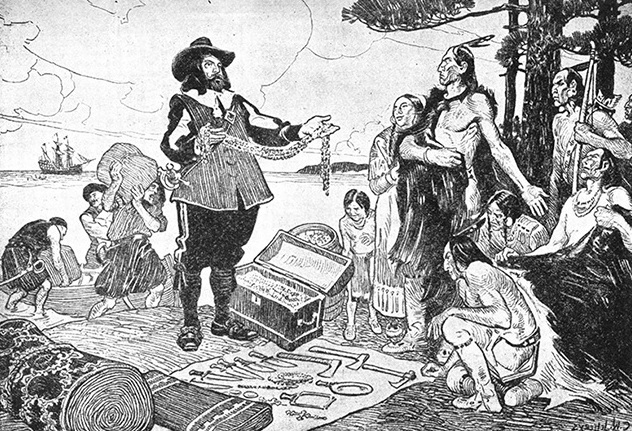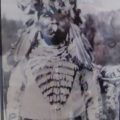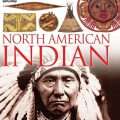
By 1719, many Indian nations had had direct or indirect contact with the European invaders from Britain, France, Spain and the Netherlands. Direct contact had initially come through the European explorers, traders, and missionaries. European manufactured trade goods and horses could be found among tribes who had had no direct contact with the Europeans. Along the Atlantic Coast and in the Southwest, Indian nations also had to deal with well-established English and Spanish colonies and with the European arrogance that assumed that Christian nations had a right, if not an obligation, to rule all non-Christian people, such as American Indians. Below are some of the events involving Indians from 1719.
English
The focus of the English colonies was on land and the Indian owners of the land were superfluous to them. They viewed themselves as superior to the Indians. In an article in The Indian Historian, Yasuhide Kawashima reports:
“No matter how valuable and useful the Indians might have been to the colonists as allies, dependent tribes, and servants and slaves, however, they were never considered as equal to the white settlers.”
Indians were not citizens, nor could they become citizens and from the viewpoint of the English colonists, they were aliens. Within the legal system Indians were generally not allowed to testify or be admitted as a witness against any Christian non-Indian.
In Massachusetts, the Natick created a proprietorship – a corporate entity to govern land allotments. The 20 proprietors – 19 men and one woman – were the heads of long established families. The proprietorship provided secure land titles and boundaries under English colonial law which were seen as useful in meeting outside pressures. According to historian Daniel Mandell, in his book Behind the Frontier: Indians in Eighteenth-Century Eastern Massachusetts:
“But the Natick proprietorship undermined the native community by severing landholding from the town polity and bringing the native community into a closer orbit to the province’s legal and economic systems.”
In New York, the colonial governor heard complaints from Pennsylvania, Maryland, and Virginia about Iroquois raids. The Iroquois explained that they were raiding only those Indians who were at war with the English colonies.
In New York, the missionary sent by the Society for the Propagation of the Gospel in Foreign Parts to convert the Mohawk at Fort Hunter was discouraged by the lack of Indian interest in the church and school and left the mission.
In Nova Scotia, the British announced that they would give ten pounds and 50 acres to any Englishman who would marry an Indian girl or to any Englishwoman who would marry an Indian man. There were few takers.
Spanish
In the southwest, the Spanish missionary program was designed to bring about the total conversion of the Indians: to change them from pagans into Christians and from Indians into tax-paying Spanish citizens. By law this process was to take ten years and was to involve four stages: (1) misión (mission) which was to include initial contact and the explanation of the importance of God and the King, (2) reducción (reduction) which was to reduce the Indians’ territory by bringing them into a segregated community centered around a church, (3) doctrina (doctrine) in which the Indians would receive instructions on the finer points of Christianity, and (4) curato (curacy) in which the Indians would become tax-paying citizens.
In New Mexico, Spanish authorities tried a Taos man for having drunk a beverage made with peyote. The Spanish felt that peyote was associated with black magic and that it gave visions to witches.
In New Mexico, the Spanish sent a punitive expedition against the Comanche. The Spanish penetrated into Colorado but did not find any Comanche.
French
In general, the French were more concerned with trade than with establishing French colonies. With regard to the Indian view of the French, William Eccles, in his chapter in North American Exploration. Volume 2: A Continent Defined, writes:
“To them the French appeared to be physically stunted, with repulsive hair on their faces and bodies. Worse still, the inability of most of the Frenchmen to speak any language of the Indians was a clear indication that they were mentally retarded. Their salted food was inedible, and many of their customs were utterly barbaric.”
The Osage had acquired several guns from French traders. They called the guns wa-ho-ton-the, which means “things that causes things to cry out”.
In Oklahoma, the French found that the Pawnee near the Arkansas River had about 300 horses. The horses were highly valued and were not for sale.
In Louisiana, the French established Fort St. Pierre to facilitate trade with the Ofogoula, Chachiuma, and other tribes.
In Illinois, the Kaskaskia, Michigamae, and Tamaroa moved at the request of the French commandant.




Leave a Reply